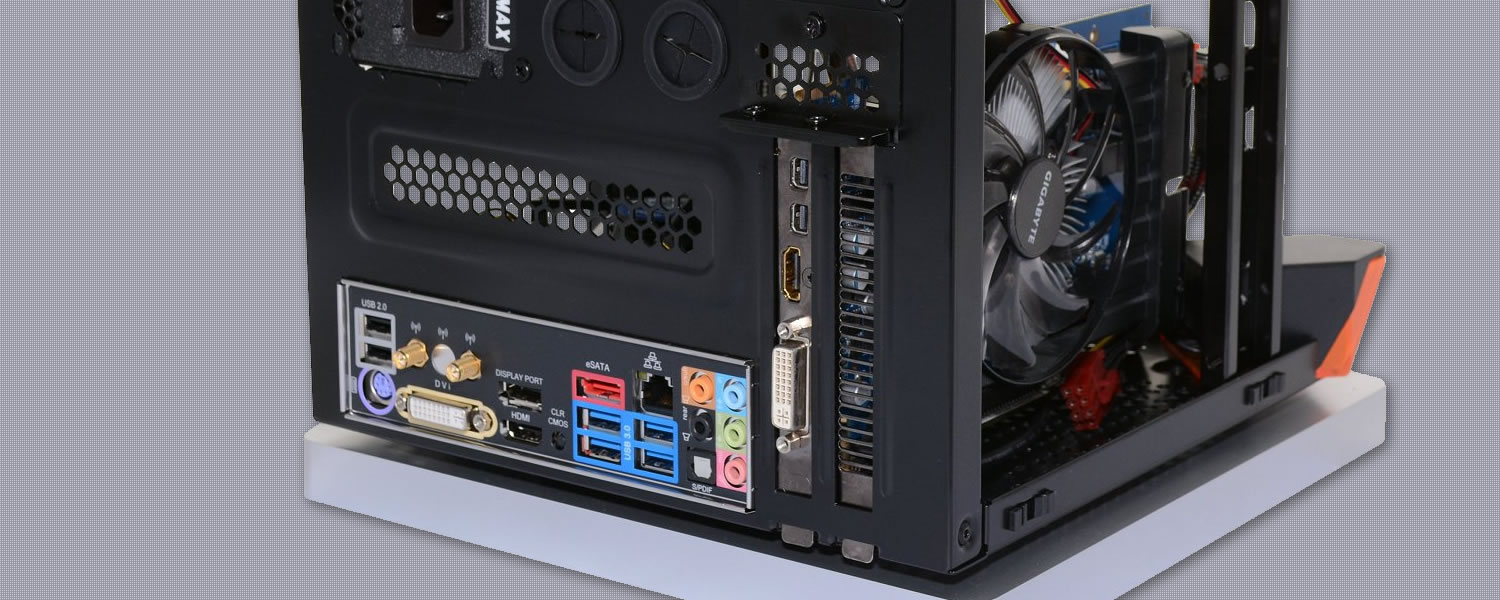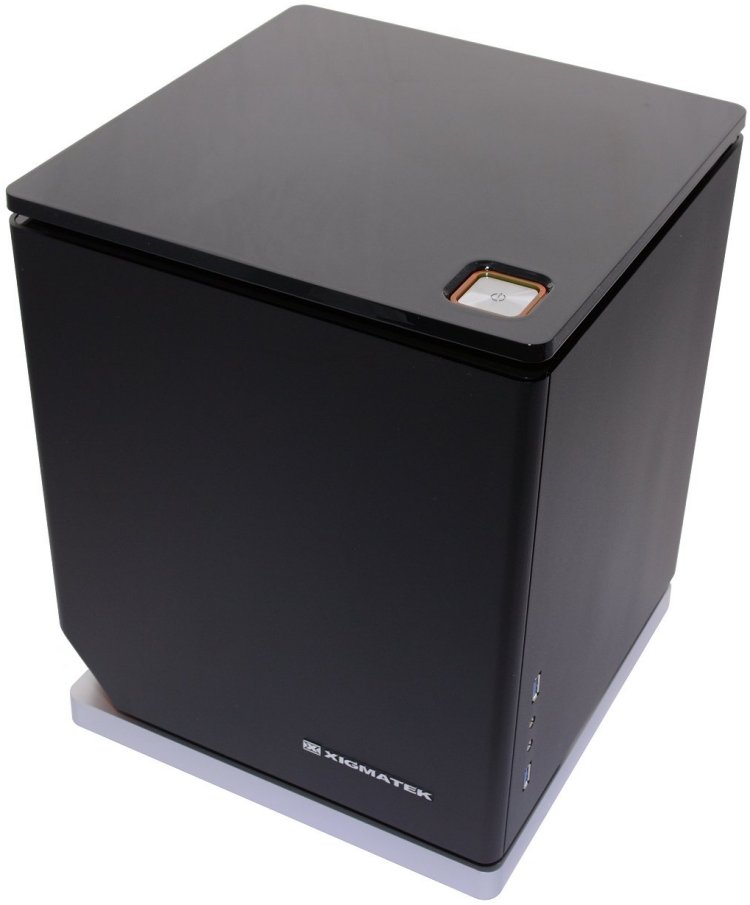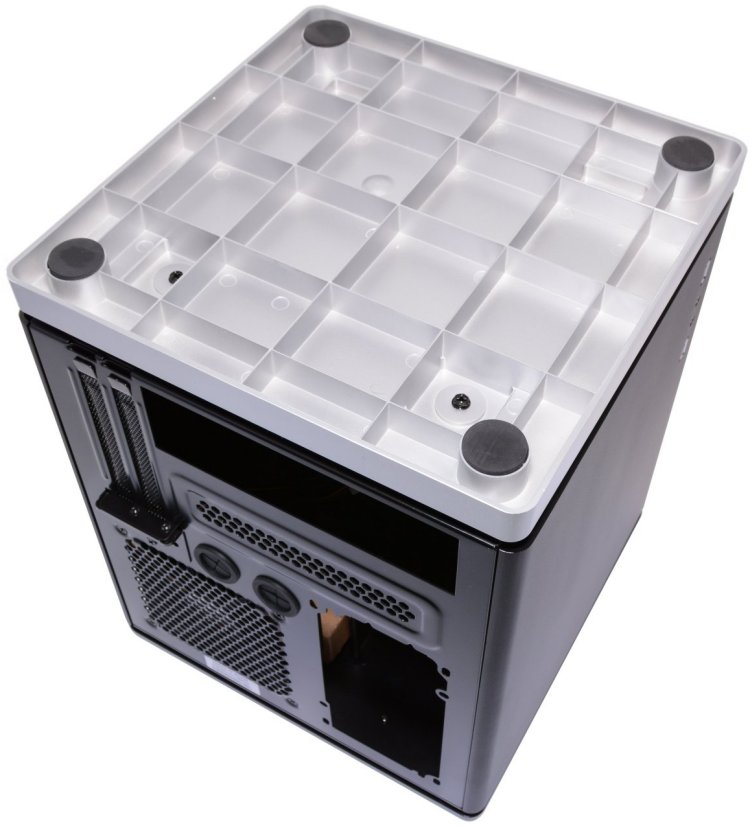It wasn't long ago that Mini-ITX was considered a niche form factor made up of a few motherboards and even fewer cases, but today major e-tailers such as Newegg have more than 60 motherboards listed and well over 150 cases, many of which are quite affordable. While we can't complain about having that kind of variety, it's increasingly difficult to know where to invest.
An enclosure like Cooler Master's new Elite RC-130 lets you cram an enormous amount of hardware into a 18L case that weighs just 6.8lbs (3.08kgs) and costs $50. This box can accommodate a full-length graphics card as well as a 120mm radiator in the front, four 3.5" drives and a 2.5" SSD – essentially a modern enthusiast rig.
The Elite RC-130 isn't alone in its ability to squeeze high-end hardware in a tiny footprint, but like so many Mini-ITX cases, it's not exactly exciting to look at. Understated designs obviously have their place with a machine that might sit in your living room, but building a Mini-ITX system always feels pretty special to me and working with a boring case just doesn't seem right.
Enter the Nebula by Xigmatek...
Xigmatek presents a striking solution with a neat cube design that offers a 22L capacity. It's safe to say the Nebula is unlike anything we've seen before, and that tends to come at a premium. The case is pretty new and pricing isn't entirely clear yet in the US, but it's going for €85 or about $115 in other regions – over twice the Elite RC-130's price.
The Nebula is set to face stiff competition if that's accurate. For starters, the Rosewill Legacy V4, Lian-Li's PC-Q08B and Corsair's newly released Obsidian Series 250D are going for $90. Another $10 opens the door to Silverstone's Sugo SG05 and Lian-Li's PC-Q25, while $110 could buy you Lian-Li's PC-TU100 or Thermaltake's SD101 and $120 brings the Rosewill Legacy U2.
Out of all those models, the Nebula certainly looks the most interesting to us, but can it compare in terms of features and design?
External Design
Depending on your point of view, the Xigmatek Nebula may be extremely interesting or equally boring. It's not interesting in the way a Cooler Master HAF case is – you won't find oddly shaped grills, ammo boxes or machine guns. The Nebula is more in line with a traditional Lian-Li case mixed with Thermaltake's flare.
From the front, the most noteworthy detail is that cut out corner featuring an orange highlight. To me, this gives the Nebula a futuristic feel, though it primarily serves as the power and activity lights.
Other than a cut out in the bottom left corner, the only other detail on the front panel is small Xigmatek label in the opposite corner. The panel itself is made from aluminum and is 3mm thick measuring 28.3mm tall and 26.0mm wide. It can be removed without tools as it clips into place, which makes it easy to pop off – sometimes even by accident, in our experience.
The left side is very similar to the front with no real features or ventilation. The right side door is again very bland with no ventilation, though it does feature the connectivity including a pair of USB 3.0 ports and two audio jacks. Depending on where you put the case, accessing these ports might not be that easy. Both the right and left panels are constructed from 3mm-thick aluminum.
On top, we find the power button which is recessed into the top panel. The silver button has a nice textured finish and is surrounded by an orange border that doesn't light up despite looking like it should.
Unfortunately, the top panel has been made out of plastic and even worse, it has been given a smooth black finish that looks great for all of two seconds after you take the protection off. The material is extremely prone to collecting fingerprints and scratches if you so much as breathe on it.
The top panel is offset 8mm above the aluminum panels which creates a nice effect, we just wish Xigmatek didn't use the black piano finish. More brushed aluminum would have been preferred.
On the bottom of the case, you will notice another panel that has been offset by 8mm. This 20mm-thick silver base has also been constructed from plastic though its matte finish is far more practical, though being plastic it does give the case a cheap feel despite looking good.
The base has four rubber feet that sit it just 2-3mm off the ground which is supposedly enough because the case is ventilated through the 8mm gap between the silver base and itself.
Around back, we find room for a standard ATX power supply, a 120mm fan with dual 1" water cooling holes, two expansion brackets and the motherboard's I/O panel. The rear panel has a black paint job though unlike the side panels it has been constructed from steel. As this is a fixed panel it's part of the case's skeleton which is made of steel rather than aluminum.







